Sleep Disorders: Insomnia, Sleep Apnea, and More
What Are Sleep Disorders?
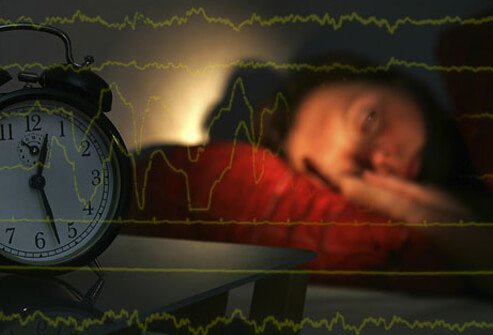
Sleep disorders are conditions that impair a person's ability to get normal, restorative sleep. The causes of these conditions are variable and range from habits people have developed before they go to sleep to a number of medical problems that disrupt the normal sleep cycle. If you notice you have a pattern of not feeling rested in the mornings after you wake up, you should probably see your doctor to determine if you have a sleep disorder. Sleep disorders can have a profound effect on a person’s overall health.
Why Is Sleep Important?

Lack of sleep can be life-threatening! For example, car accidents, personal problems, poor job performance, injuries, memory problems, and mood disorders have been linked to poor sleep. In addition, researchers have concluded sleep disorders likely contribute to heart disease, obesity, and diabetes.
Symptoms of Sleep Disorders

Symptoms of sleep disorders vary depending on the type of sleep disorder. The symptoms may range from mild to severe and usually include one or more of the following: hypersomnia (excessive daytime sleepiness), insomnia (decreased sleep efficiency with unrestful sleep with frequent waking up in the night), loud snoring and/or brief pauses in breathing (short periods of apnea), leg movements or an urge to move the legs at night, sleepwalking, or night terrors (nightmares).
The Sleep Cycle

A normal sleep cycle has two major categories termed REM and non-REM. REM stands for rapid eye movement. REM sleep is characterized by muscle relaxation, dreaming, episodic rapid eye movements, and low amplitude waves on an EEG (encephalograph). Non-REM sleep is divided into four stages from light sleep (stage 1) to stage IV (Delta or deep sleep). Non-REM sleep occupies about 75% of normal sleeping time while REM occupies the remaining 25% and usually occurs more toward morning. Sleep disorders disrupt these sleep cycles.
How Much Sleep Do I Need?
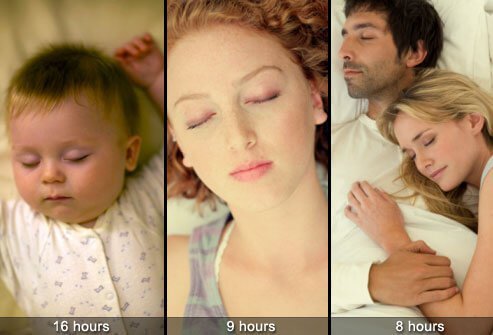
The sleeping time needs of individuals are variable, and sleep times vary between kids and adults.
Adults
Some adults can vary in their sleep requirements from about 5 to as many as 10 hours per night. However, several studies have suggested the majority of normal adults average about 7 to 8 hours per night.
Younger People
In general, the younger the person, the more sleep they need. For example, teenagers require about nine hours of sleep while infants require about 16 hours per night.
What Is Insomnia?
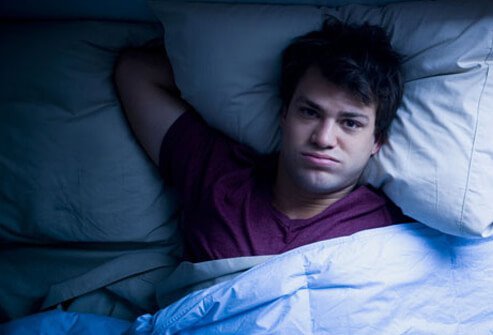
Insomnia is the inability to initiate or maintain sleep. Most people in their lifetime will have some difficulty falling asleep occasionally. However, if trouble falling asleep occurs either frequently or steadily, the individual may have insomnia. People with insomnia have difficulty falling asleep, sometimes for hours at a time, and they may wake up too early or they may wake up repeatedly through the night. Insomnia is considered the most common sleep disorder in the U.S. and studies suggest as many as 95% of Americans have reported an episode of insomnia at some time during their life.
Causes of Insomnia: Sleep Hygiene
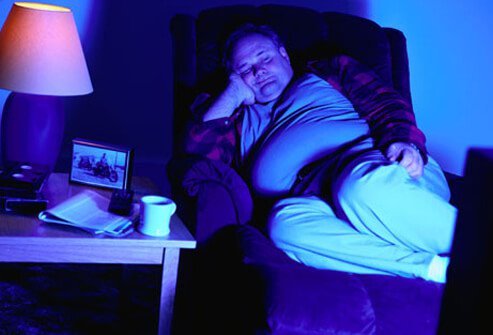
Poor sleep hygiene refers to bad habits that interfere with an individual's ability to fall asleep. For example, drinking coffee or other caffeinated drinks in the evening, smoking, eating heavy foods late in the evening, falling asleep with the lights on and/or leaving the television on, or using a cell phone, computer, or tablet right before bed are bad habits or poor sleep hygiene can lead to insomnia.
Causes of Insomnia: Mental Health
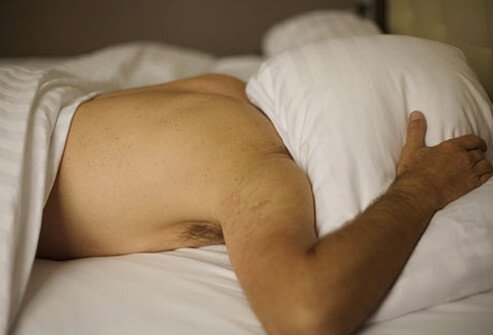
Poor sleep hygiene is not the only cause of insomnia. Mental health problems such as depression, anxiety, and stress (for example, posttraumatic stress disorder, loss of spouse or financial problems) may also cause insomnia. In addition, medications used to treat some of these mental health problems may also cause or increase sleep problems. Discuss any sleep-related problems you think are caused by medications with your physician.
Cause of Insomnia: Medical Conditions
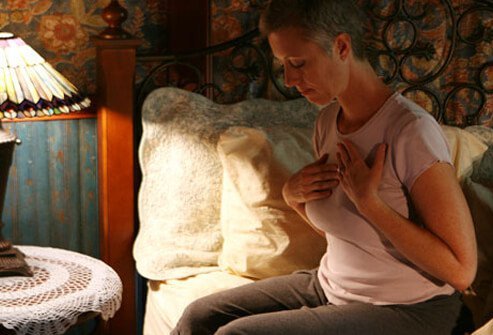
Insomnia is often associated with other medical conditions. These medical conditions often interfere with the normal sleep cycle. Some of the more common conditions are listed as follows:
- chronic pain
- COPD
- asthma
- sleep apnea
- heart failure
- arthritis
- thyroid problems
- neurological problems (strokes, Alzheimer's disease, Parkinson's disease)
- depression
- endocrine problems
Causes of Insomnia: Pregnancy, Menopause, and Age

Other fairly common causes of insomnia are pregnancy, menopause, and age (both men and women over age 65), all of which may be due to hormonal and other body chemistry changes. In addition, shift workers can develop problems because their sleep cycle is interrupted due to their irregular work schedule. Part of the reason for this development of insomnia is due to resetting of our internal body clock that controls the time of day that hormones are produced; also, the timing of other routine body functions such as urination, defecation, and exposure to light and darkness are altered because of schedule changes.
What Is Sleep Apnea?
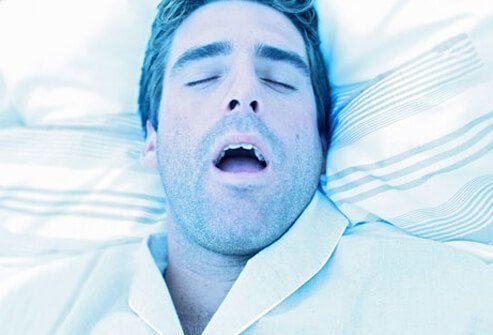
Sleep apnea is a disorder that causes a person to stop breathing many times while they are sleeping. The breathing pauses may last a few seconds or longer and trigger the body to switch from non-REM stage IV sleep to the very light stage I sleep; occasionally the patient may wake up. These multiple interruptions of the normal sleep cycle can lead to insomnia and daytime sleepiness. Many people have this problem but do not realize it.
Sleep Apnea Symptoms
Symptoms of sleep apnea are often noted by the patient's spouse. The symptoms are snoring, pauses in breathing often followed by a gasp or snort sound, and sleepiness during daytime hours.
Sleep Apnea Treatment
Sleep apnea can be treated in various ways.
- Lifestyle changes (losing weight, avoiding alcohol, sleeping on one’s side instead of back, quit smoking)
- Mouthpieces (oral appliances)
- Breathing devices (CPAP)
- Weight loss in some people
- Surgery
Who Gets Sleep Apnea?

The common risk factors for sleep apnea include being overweight, over age 65, male, Hispanic, African-American, and of Pacific Island descent. Also, individuals who smoke, use alcohol, sedatives and/or tranquilizers, and individuals with nasal congestion, heart disorders, strokes, or brain tumors are also at higher risk for sleep apnea. Occasionally, individuals who have some blockage of their airway (for example, enlarged tonsils or narrowed airway) are also at risk of developing sleep apnea.
What Is Restless Legs Syndrome?

Another disorder of the nervous system, restless leg syndrome (RLS), can lead to insomnia and is considered a sleep disorder. It is a disorder of the nervous system that affects the legs by causing abnormal urges to move them. Unfortunately, these urges seem to occur more frequently at night and cause sleep interruption.
What Causes Restless Leg Syndrome?
The cause of restless leg syndrome is unknown in most cases, though genetics may play a part. Low levels of iron in the brain may also lead to restless leg syndrome.
Restless Leg Syndrome Symptoms
- Legs feel uncomfortable, especially when lying down, causing the afflicted person to feel the need to move them around. Similar sensations may be felt in the arms, trunk, or head.
- These sensations may disrupt sleep.
- RLS frequently comes on worse at night.
- Frequency of these episodes varies depending on the severity of the case
Restless Leg Syndrome Treatment
- Move the affected limbs
- Treat associated medical conditions (for examples, peripheral neuropathy, diabetes)
- Change lifestyle (stop smoking, reduce caffeine and alcohol, take iron supplements, get moderate exercise, take hot baths)
- Medication (dopaminergic agents, gabapentin enacarbil, benzodiazepines, opioids, anticonvulsants)
What Is Narcolepsy?
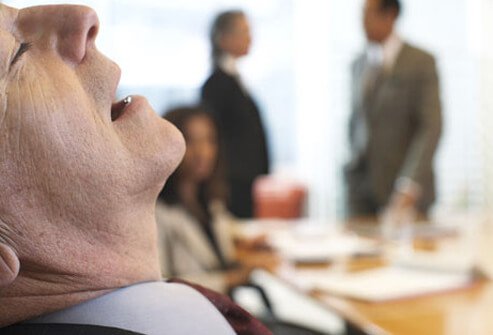
Narcolepsy is a neurological disorder that causes extreme sleepiness during the day; some patients experience intermittent and uncontrollable episodes of falling asleep during any type of activity.
Narcolepsy Symptoms
- Excessive daytime sleepiness
- Cataplexy (sudden loss of muscle tone)
- Hallucinations
- Sleep paralysis (a temporary inability to move or speak while falling asleep or waking up) that lasts a few seconds up to several minutes after which the person fully recovers.
Narcolepsy Treatment
- Lifestyle changes (practice good sleep hygiene, limit caffeine, tobacco and alcohol, exercise, get more sunlight, schedule naps, keep a to-do list and stay organized)
- Medications (stimulants, antidepressants, sodium oxybate)
Sleepwalking (Somnambulism)
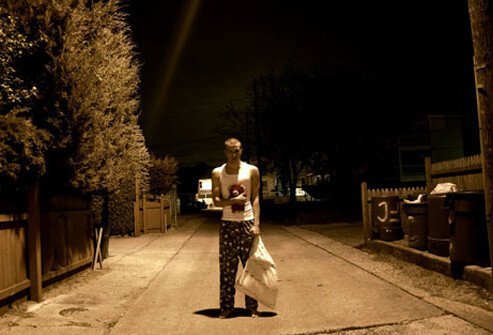
Sleepwalking, also known as somnambulism, is a behavior disorder that occurs during deep sleep and results in an individual either walking or performing complex behaviors while still asleep. Sleepwalking is more common in children than in adults and more likely to occur in people who are sleep deprived. The person may be difficult to awaken and will likely not remember anything about sleepwalking once they wake up.
Sleepwalking Causes
- Sleep deprivation
- Chaotic sleep schedule
- Stress
- Drunkenness
- Use of certain drugs like sedative-hypnotics, neuroleptics, stimulants, and antihistamines
Sleepwalking Treatment
- Medication (ProSom, Klonopin, Trazodone)
- Relaxation and mental imagery techniques
- Anticipatory waking (waking the person shortly before sleepwalking usually begins)
Shift Work Sleep Disorder
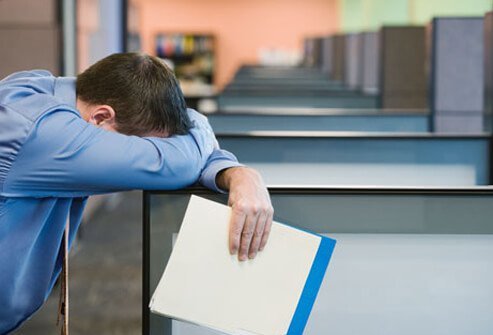
Shift work sleep disorder commonly affects people who work non-traditional hours, typically between 10 p.m. and 6 a.m. About 20 percent of the US workforce is employed during non-traditional hours, meaning one in five Americans' work schedules have the potential to interfere with their bodies' natural circadian rhythms.
Shift Work Sleep Disorder Symptoms
Difficulty sleeping and excessive sleepiness are most typical of shift work sleep disorder. Shift work sleep disorder may also make it difficult to concentrate.
Shift Work Sleep Disorder Treatment
- Maintain a sleep diary
- Decrease the number of consecutive night shifts
- Avoid extended work hours
- Avoid long commutes
- Avoid frequent shift rotations
- When not working, be sure to sleep as much as you need
- Try napping during a night shift
- Sleep aids may be needed
Sleep Disorder Treatment: Sleep Diary

A sleep diary can help you and your physician gain valuable insight into your sleep problems. You can help your physician if you chart your habits for 1 to 2 weeks before you see your doctor. Alternatively, your doctor may ask you to keep a sleep diary before your next visit.
The sleep diary can help document potential problems in your living habits that inhibit sleep or cause insomnia. Items included in a sleep diary may be the following: what time you go to bed, what time you fall asleep, the time you wake up, how many times you wake up during the night, when caffeine or alcohol is consumed, when and what you eat and drink before you go to bed, emotional challenges and/or stress factors, and finally, a list of your medications.
Sleep Disorder Diagnosis: Sleep Study
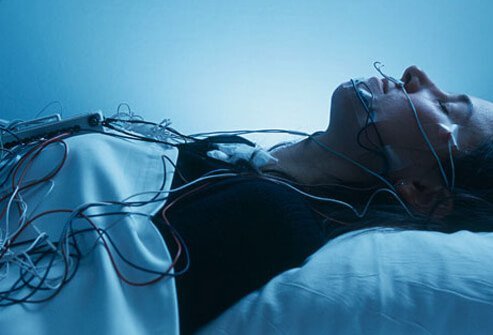
Diagnosing sleep disorders usually begins with your physician obtaining a physical exam, a history of your sleep problems, and a review of potential risk factors along with a review of your sleep diary if you have one. Your physician may then refer you to a sleep clinic for additional testing termed a "sleep study" or polysomnogram. This study usually occurs overnight and the patient's eye movements, breathing, brain activity, and other measurements are performed. The results may indicate a disorder such as sleep apnea or other sleep-related problems.
Sleep Disorder Treatments

The treatment for a sleep disorder depends upon the cause. Narcolepsy and restless leg syndrome can be treated with lifestyle changes and prescription medications; the same is true for insomnia. However, insomnia may only require lifestyle changes. Sleepwalking has no specific treatment other than lifestyle changes such as good sleep hygiene – some patients respond to hypnosis.
Breathing Machines
A breathing device (CPAP device) may be prescribed to keep airways open at night so you can rest if you have sleep apnea.
Biofeedback
Biofeedback is a method of training the mind to develop greater awareness and control over its own stress. A computer monitors heart rate and other stress indicators, and sends back signals to help a person become more aware of their own stress level. This technique can be useful in treating anxiety-based insomnia, sleep apnea, or other sleep disorders.
Sleep Disorders in Children

Sleep disorders do affect children and adolescents. Even infants can experience sleep disorders. These can include trouble falling or staying asleep, sleep apnea, sleepwalking, restless leg syndrome and excessive sleepiness.
Sleep Disorders in Children: Causes
Because there are many different kinds of sleep disorders in children, their causes vary as well. Stress can cause nightmares, which can lead to night terrors. Bedwetting can be caused by a family history of bedwetting, low bladder control, or emotional distress, among other causes. Insomnia in children may be caused by stress, pain, or mental disorders.
Sleep Disorder in Children: Treatment
Like the causes of sleep disorders in children, treatments for these conditions vary. Positive bedtime routines, restricting screen time before bed, setting strict routines for bedtime and wakeup time and making sure kids get plenty of exercise can all help with many childhood sleep disorders like restless leg syndrome.
How to Sleep Better: Exercise

Regular exercise is another part of a good sleep hygiene program. However, choosing the times of day that you exercise is important. Exercising in the late afternoon can make it easier to fall asleep and stay asleep. However, exercise within a few hours (about 2 to 4 hours) before going to sleep may actually make it more difficult to get a good night's sleep. People who exercise regularly, in general, have less incidence and risk for insomnia.
How to Sleep Better: Foods to Avoid

Food and drink make up another aspect of good sleep hygiene. Foods to avoid are those containing caffeine (coffee, tea, and soda drinks), heavy (large quantity) evening meals, spicy foods, and alcohol consumption. Alcohol may cause some people to become sleepy but it can lead to early nighttime awakening.
How to Sleep Better: Helpful Foods

Foods that help establish good sleep hygiene would include reasonable levels of complex carbohydrates and protein in the evening meal. Small or moderate quantities of food should be consumed in the evening, preferably several hours before going to bed. In addition, cereals with milk or a few crackers and cheese may be helpful. Some nutritionists suggest eating nothing at least one hour before attempting to sleep.
How to Sleep Better: Reduce Technology Before Bed
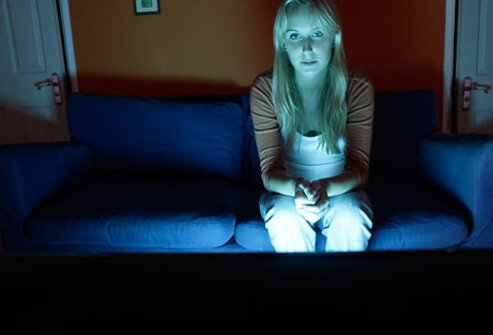
Another aspect of good sleep hygiene is to reduce items that may stimulate you to think or act right before bedtime. Perhaps one of the best examples is late-night television. Some programming may increase mental alertness or cause you to think about subjects. Similar situations occur with children playing video games right before bed or teenagers and/or adults using computers, cell phones, or tablets.
Good sleep hygiene suggests you start reducing brain stimulation as you prepare to go to sleep. Sleep researchers suggest you stop using TV, video games, or the Internet about an hour or so before going to bed; others suggest individuals should prepare for bed by reading and by prohibiting TVs or computer use in the bedroom.
How to Sleep Better: Bedtime Rituals

You can take some positive actions to establish good sleep hygiene habits. For example, you can "wind down" your activity levels about an hour or so before bed by taking a warm bath, reading, or practicing relaxation biofeedback techniques. It is good sleep hygiene to establish routine bedtimes and wake-up times to key your body's chemistry into expecting fairly routine times to occur for bedtime and wake-up time.
Following the do's and don'ts for good sleep hygiene may help reduce or even solve some sleep disorders.
Sleep Disorders: Insomnia, Sleep Apnea, and More
IMAGES PROVIDED BY:
- Jochen Tack/Imagebroker.net
- C. Quandt Photography/Flickr
- Pixtal Images
- Ulrich Niehoff/Imagebroker
- David Sacks/The Image Bank, Anna Moller/Digital Vision, B2M Productions/Photographer's Choice
- Mike Kemp
- Ryan McVay/Photodisc
- Radius Images
- Steve Pomberg/WebMD
- Alan Powdrill/Stone
- Stockbyte
- Uppercut Images
- Sean Justice/Photodisc
- Radius Images
- John Michael Szczepaniak/Flickr
- Walter Hodges/Jetta Productions
- PV Stroheim/Age Fotostock
- BSIP/Phototake
- Don Garbera/Phototake
- Steve Casimiro/Riser
- The Other Image/Botanica
- Charlie Stebbings/Fresh Food Images
- Inti St. Clair/Photodisc
- Peter Cade/Iconica
- Silvia Otte/Photonica
REFERENCES:
- American Family Physician Journal: "Sleep Disorders and Sleep Problems in Childhood"
- American Sleep Apnea Association: "Getting a Diagnosis"
- ClevelandClinic.org: "Biofeedback for Sleep Disorders", "Shift Work Sleep Disorder"
- Medicinenet: "10 Tips to Avoid Insomnia and Get a Good Night's Sleep"
- Medscape: "Insomnia", "Sleep Disorders"
- NarcolepsyNetwork.org: "Medications", "Treatment"
- National Institute of Neurological Disorders and Stroke: "Restless Legs Syndrome Fact Sheet"
- National Sleep Foundation: "Healthy Sleep Tips", "How Does Exercise Help Those With Chronic Insomnia", "How Much Sleep Do We Really Need", "Sleepwalking", "What Causes Insomnia"
- StandfordHealthCare.org: "Pediatric Sleep Disorders"
- University of Maryland Medical Center: "Biofeedback"
© 1996-2022 WebMD, LLC. All rights reserved.
Source slideshow on OnHealth


